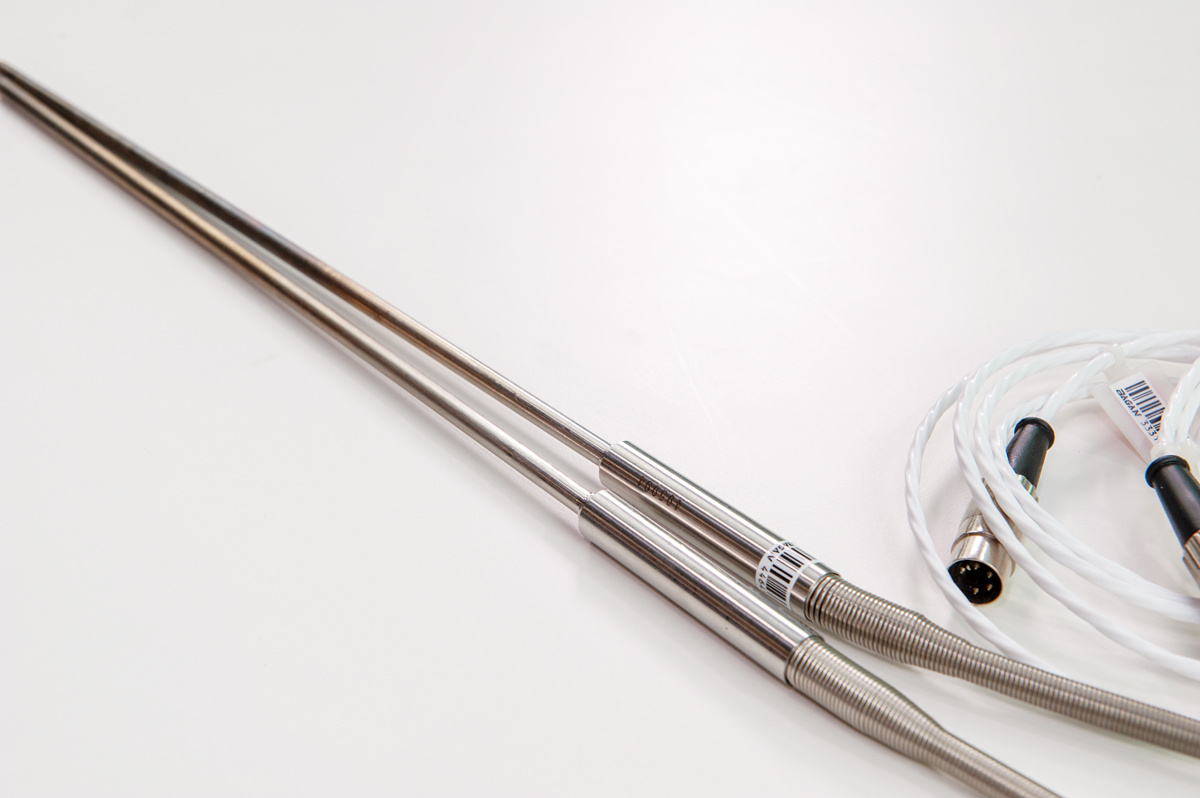PRT vs SPRT: What's the Difference?
Gain insight on the differences in characteristics and applications of PRTs and SPRTs
In the world of precision measurement and commercial calibration, temperature is a fundamental parameter that requires accurate calibration. Calibration laboratories rely heavily on high-precision thermometers to ensure that other instruments measure temperature correctly. Among these thermometers, the Platinum Resistance Thermometer (PRT) and the Standard Platinum Resistance Thermometer (SPRT) stand out. While they may seem similar, their applications and characteristics differ significantly.

What is a PRT?
A Platinum Resistance Thermometer (PRT) is a temperature sensor that utilizes the predictable change in electrical resistance of platinum with temperature. PRTs are widely used in industrial applications due to their stability, repeatability, and wide temperature range, typically from -200°C to 420°C, ranging up to 850°C at the extreme. These thermometers are designed to offer high accuracy over a long period, making them ideal for routine temperature measurements in various settings, especially in commercial calibration labs.
What is an SPRT?
A Standard Platinum Resistance Thermometer (SPRT), on the other hand, is the gold standard in temperature measurement. SPRTs are carefully constructed and calibrated to ensure the highest accuracy and stability possible. These thermometers are used as reference standards in national metrology institutes and high-level calibration laboratories. The typical temperature range for an SPRT is between -200°C and 660°C, ranging up to 962°C at the extreme, covering a broader range with greater precision than most PRTs.
Primary Differences Between PRTs and SPRTs
- Accuracy and Stability: SPRTs are designed to be more accurate and stable over a wider temperature range compared to PRTs. The strict manufacturing process and higher purity of platinum used in SPRTs contribute to their superior performance.
- Construction and Materials: The construction of SPRTs involves the use of high-purity platinum and other specialized materials, ensuring minimal drift and maximum reproducibility. In contrast, PRTs, while still made with platinum, are constructed with industrial-grade materials that may introduce slight variations over time.
- Calibration and Usage: In calibration laboratories, PRTs are often used for routine calibrations and measurements where ultra-high precision is not critical. SPRTs, however, are reserved for the calibration of other thermometers and as primary standards due to their unparalleled accuracy.
- Cost and Maintenance: SPRTs are significantly more expensive and require more careful handling and maintenance compared to PRTs. This is due to their delicate construction and the need to maintain their accuracy over time.
Applications in Calibration Laboratories
In a calibration laboratory, PRTs and SPRTs play complementary roles. PRTs are used for general calibration tasks where good accuracy is sufficient, such as calibrating industrial thermometers or temperature controllers. They are reliable workhorses in day-to-day operations. On the other hand, SPRTs, are used for the highest level of calibration work, serving as the reference standard against which other thermometers, including PRTs, are calibrated. The SPRT's role is critical in ensuring that all temperature measurements in the laboratory are traceable to national or international standards.
Calibrating a PRT or SPRT
Calibration of PRTs or SPRTs should be calibrated utilizing ITS-90 Fixed Point Cells that represent fundamental temperature standards. This includes, the triple point of water, liquid gallium, tin, indium, zinc, and aluminum. SPRTs in particular will undergo more rigorous checks to preserve their role as a primary standard. Calibration of both devices ensures traceability to national or international standards, providing confidence in their measurements.
At Bagan Calibrations, it is our goal to support other commercial calibration laboratories found throughout North America with their PRT and SPRT calibrations. See capabilities below:

Understanding the differences between PRTs and SPRTs is essential for anyone involved in precision temperature measurement or calibration. While both types of thermometers are crucial in a calibration laboratory, their applications vary significantly based on the required accuracy and stability. By leveraging the strengths of both PRTs and SPRTs, calibration labs can ensure that all temperature measurements are as accurate and reliable as possible.
Looking for a PRT & SPRT Calibration Service? Take a closer look at how we calibrate PRT & SPRT temperature units here.
You Can Rely on Bagan Calibration Services
We pride ourselves on our premier customer service, which has allowed us to maintain relationships with customers since the beginning. Many of our customers range from Fortune 500 companies to privately owned specialty companies across the U.S.A and other countries. Our proprietary Management Information and Reporting System, BaganTrack gives you direct access to your customer service representative, certificates, master gauge list, and more. Additionally, BaganTrack is compliant to ISO 9001:2015. It is our goal to give you the best experience possible as your calibration and technical service provider.
Need Calibration Services? Fill out the form below and one of our specialists will provide assistance!
©2025 Richard J. Bagan, Inc. All rights reserved.